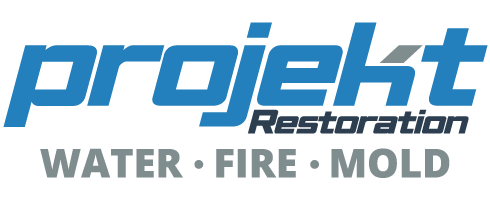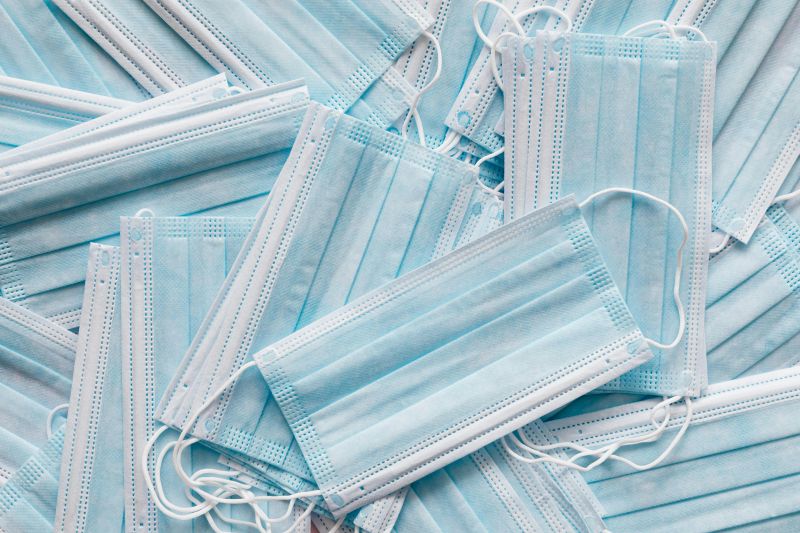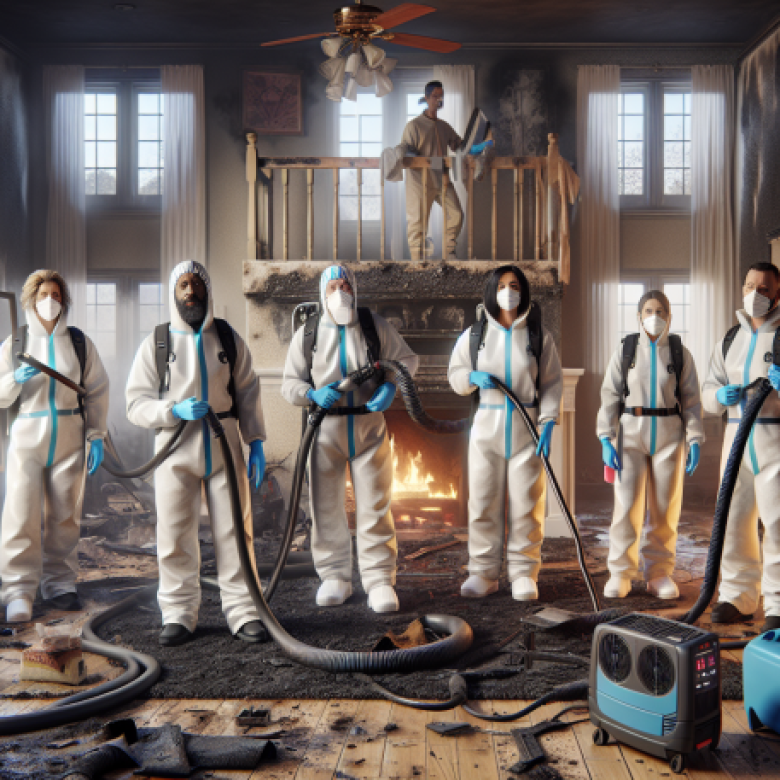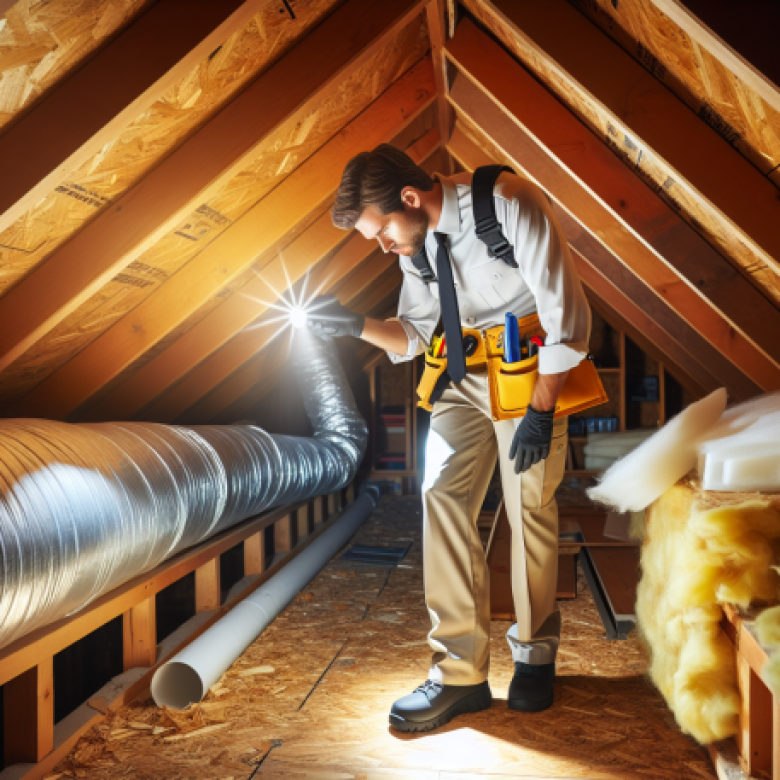Mold can be a persistent problem in homes, leading to health issues and costly repairs if not addressed promptly. At Projekt Restoration, we understand the importance of preventing mold growth before it becomes a serious concern. As your go-to experts in water, fire, and mold restoration, we emphasize the significance of proactive measures to keep your living spaces safe and healthy. In this blog, we will explore essential tools for DIY mold prevention at home, equipping you with the knowledge to tackle moisture issues effectively. From moisture meters to dehumidifiers, these tools can help you maintain optimal humidity levels and identify potential mold hotspots. Join us as we delve into practical solutions that empower homeowners to take charge of their environment and ensure a mold-free home.
Understanding Mold: Causes and Risks
Mold is a common household issue that can pose significant health risks and damage to your property. Understanding the causes of mold growth is essential for effective prevention. Mold thrives in damp, humid environments, often resulting from water leaks, poor ventilation, or high humidity levels. According to the Environmental Protection Agency (EPA), "mold can cause a variety of health effects, particularly in individuals with respiratory conditions or weakened immune systems."
The risks associated with mold exposure include allergic reactions, asthma attacks, and other respiratory issues. Additionally, mold can compromise the structural integrity of your home, leading to costly repairs. To mitigate these risks, it is crucial to identify and address the sources of moisture in your home.
Here are some common causes of mold growth:
- Water leaks from pipes or roofs
- High humidity levels, especially in bathrooms and kitchens
- Condensation on windows and walls
- Flooding or water damage
To protect your home, consider implementing preventive measures such as regular inspections, using dehumidifiers, and ensuring proper ventilation. For more information on mold prevention and remediation, visit our mold assessment page. If you suspect a mold problem, don’t hesitate to contact us for professional assistance. Remember, early intervention is key to maintaining a safe and healthy living environment.
Essential Cleaning Supplies for Mold Prevention
To effectively prevent mold growth in your home, having the right cleaning supplies is crucial. Start with a high-quality dehumidifier, which helps maintain optimal humidity levels, making it difficult for mold to thrive. Additionally, invest in a good mold-resistant cleaner that can tackle existing mold spores on surfaces. Look for products containing ingredients like hydrogen peroxide or vinegar, which are effective and environmentally friendly.
Microfiber cloths are another essential item, as they can trap mold spores and prevent them from spreading during cleaning. Pair these with a sturdy scrub brush for tougher areas, such as bathroom tiles or kitchen sinks, where mold is likely to develop. For larger areas or persistent mold issues, consider using a mold assessment kit to identify hidden mold and moisture sources.
Don’t forget about protective gear. Wearing gloves and a mask while cleaning can protect you from inhaling spores or coming into contact with harmful cleaning agents. Lastly, ensure proper ventilation in your cleaning areas to help reduce moisture buildup. By equipping yourself with these essential cleaning supplies, you can significantly reduce the risk of mold growth and maintain a healthier living environment. For more information on mold prevention and restoration, visit our contact page.
Humidity Control: Tools to Maintain Optimal Levels

Maintaining optimal humidity levels in your home is crucial for preventing mold growth and ensuring a healthy living environment. High humidity can create the perfect breeding ground for mold spores, leading to potential health risks and property damage. To effectively control humidity, several tools can be employed.
One of the most effective devices is a dehumidifier, which removes excess moisture from the air, helping to maintain humidity levels between 30% and 50%. Regularly monitoring humidity levels with a hygrometer can also be beneficial, allowing you to take action before conditions become favorable for mold growth.
In addition to these tools, proper ventilation is essential. Installing exhaust fans in areas prone to moisture, such as bathrooms and kitchens, can significantly reduce humidity. Furthermore, ensuring that your home is well-insulated can prevent condensation on walls and ceilings, which can lead to mold issues.
For those who suspect existing mold problems, a professional mold assessment can identify hidden mold and moisture sources. By utilizing these tools and strategies, you can effectively control humidity levels and protect your home from mold-related issues, ensuring a safe and healthy living space for you and your family.
Air Quality Monitors: Keeping Track of Mold Growth

Air quality monitors are essential tools for homeowners looking to prevent mold growth effectively. These devices measure various indoor air quality parameters, including humidity, temperature, and the presence of mold spores. By keeping track of these factors, you can identify potential mold growth conditions before they escalate into a serious problem. High humidity levels, often above 60%, create an ideal environment for mold to thrive. With an air quality monitor, you can receive real-time data and alerts, allowing you to take proactive measures such as using a dehumidifier to maintain optimal humidity levels.
Additionally, many modern air quality monitors come equipped with features that track long-term trends, helping you understand seasonal changes and their impact on indoor air quality. This information is invaluable for planning mold assessments and ensuring your home remains a safe environment for you and your family. Regular monitoring can also assist in identifying specific areas of concern, guiding you in targeted cleaning and maintenance efforts. By investing in an air quality monitor, you take a significant step towards effective DIY mold prevention, ensuring a healthier living space and reducing the risk of costly mold remediation in the future.
Protective Gear: Safeguarding Yourself During DIY Projects

When embarking on DIY projects, especially those related to mold prevention, ensuring your safety is paramount. Protective gear is essential to shield yourself from potential hazards, including harmful mold spores and toxic substances. Start with a high-quality mask or respirator designed to filter out airborne particles. This is crucial when working in areas where mold is present, as inhaling spores can lead to respiratory issues.
Additionally, wearing gloves can protect your skin from irritants and allergens commonly found in mold-infested environments. Opt for durable, waterproof gloves to ensure maximum protection. Safety goggles are also recommended to prevent any mold spores or cleaning agents from irritating your eyes.
Don’t forget about proper clothing; long sleeves and pants can help minimize skin exposure. If you’re working in a particularly contaminated area, consider using disposable coveralls for added protection.
Before starting your project, familiarize yourself with the necessary mold assessment techniques to identify the extent of the problem. If you need assistance, reaching out to professionals for consulting can provide valuable insights. Remember, safeguarding yourself is just as important as the tools you use in your DIY endeavors. Prioritize your health and safety to ensure a successful and safe mold prevention project.
Mold-Resistant Products: What to Look For
When selecting mold-resistant products for your home, it’s essential to understand the key features that enhance their effectiveness. First, look for materials labeled as "mold-resistant" or "mold-proof." These products often contain antimicrobial agents that inhibit mold growth, making them ideal for high-moisture areas like bathrooms and kitchens. Common mold-resistant materials include paints, drywall, and insulation. For instance, mold-resistant drywall is specially treated to resist moisture, while mold-resistant paints can provide an additional barrier against mold spores.
Another important factor is the product’s ability to withstand humidity. Products designed for humid environments, such as dehumidification systems, can help maintain optimal moisture levels, further preventing mold growth. Additionally, consider the ease of cleaning and maintenance. Mold-resistant products should be easy to wipe down and maintain, ensuring that any potential mold spores can be quickly removed.
Lastly, always check for certifications from reputable organizations, which can provide assurance of a product’s mold-resistant capabilities. By choosing the right mold-resistant products, you can significantly reduce the risk of mold infestations in your home, ensuring a healthier living environment. For more information on effective mold prevention strategies, visit our contact page or explore our mold assessment services.
Regular Maintenance Tools for Long-Term Prevention
To effectively prevent mold growth in your home, regular maintenance is key. Utilizing the right tools can help you stay ahead of potential mold issues and ensure a healthy living environment. One essential tool is a high-quality dehumidifier, which helps maintain optimal humidity levels, making it difficult for mold to thrive. Regularly checking and replacing air filters in your HVAC system is also crucial, as clean filters improve air quality and reduce moisture buildup.
Another important tool is a moisture meter, which allows you to monitor the moisture levels in various areas of your home, especially in basements and bathrooms. By identifying damp spots early, you can take action before mold has a chance to develop. Additionally, a good vacuum with a HEPA filter can help remove mold spores and allergens from surfaces, contributing to a cleaner environment.
For those who prefer a more hands-on approach, consider investing in mold assessment kits that allow you to test for mold presence in your home. Regular inspections and maintenance using these tools can significantly reduce the risk of mold growth, ensuring your home remains safe and comfortable. By incorporating these practices into your routine, you can enjoy long-term prevention and peace of mind regarding mold issues.
In conclusion, taking proactive steps to prevent mold growth in your home is essential for maintaining a healthy living environment. By equipping yourself with the right tools and knowledge, you can effectively combat moisture and humidity, which are the primary culprits behind mold proliferation. Essential tools such as dehumidifiers, moisture meters, and air purifiers can significantly reduce the risk of mold development. Additionally, regular inspections and maintenance, along with the use of mold-resistant materials, can further safeguard your home. Remember, prevention is always better than cure; by investing time and resources into mold prevention, you not only protect your home but also ensure the well-being of your family. Stay vigilant, stay informed, and enjoy a mold-free home!





